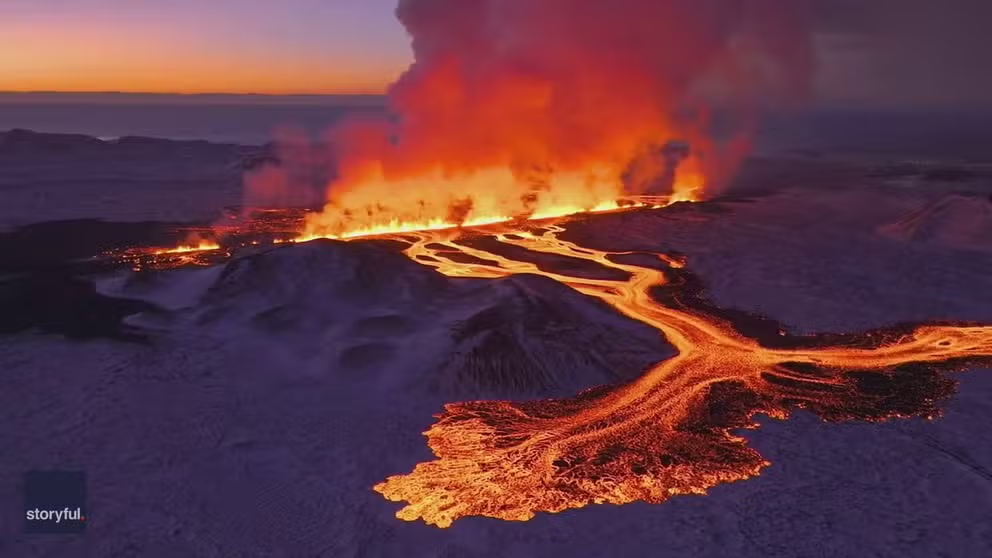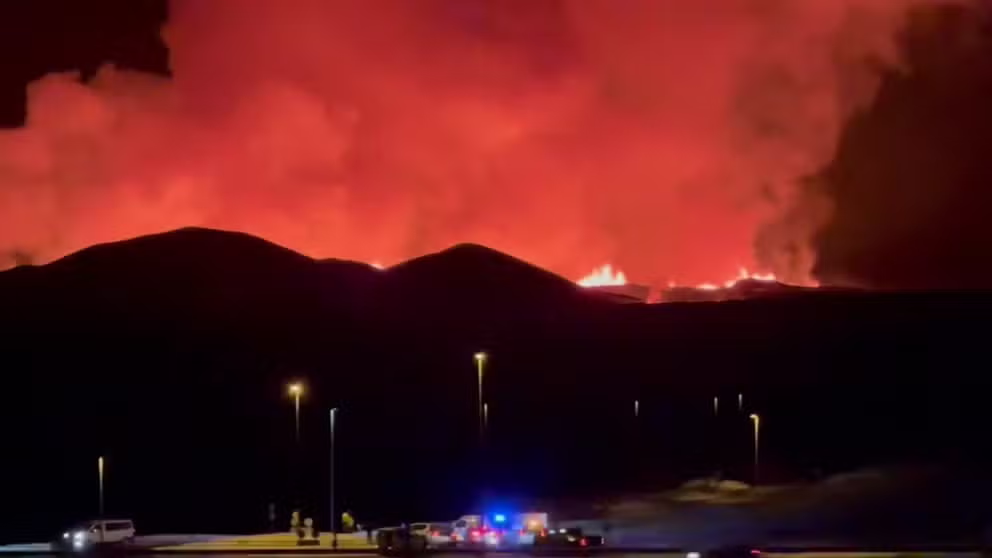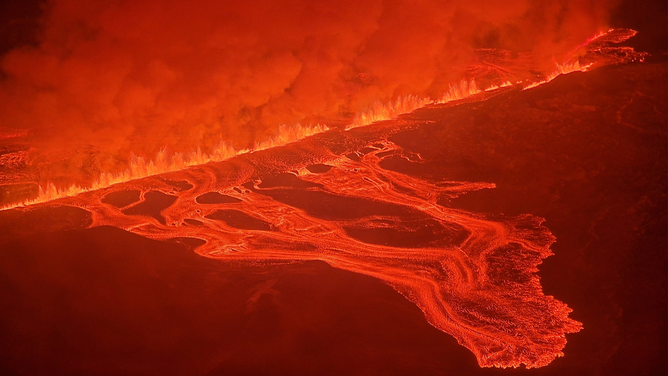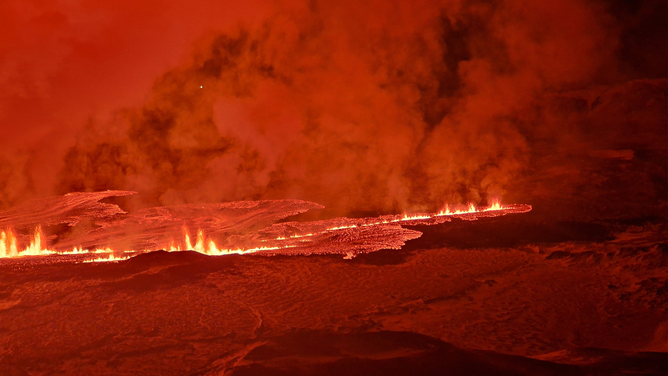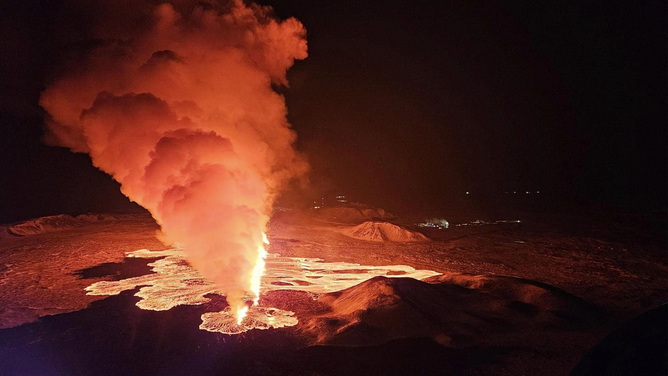Eruptive activity ceases in Iceland after volcano erupts for third time in 2 months
Thursday's eruption led to the closure and evacuation of the popular tourist destination, Blue Lagoon. It also prompted officials to declare a state of emergency.
Watch: Drone video provides dramatic image of volcanic eruption in Iceland
Drone video recorded in Iceland shows the power of a volcano that erupted for the third time in two months on Thursday, Feb. 8, 2024.
GRINDAVIK, Iceland – There were no indications of any further activity the day after a volcano near the coastal town of Grindavík in southwestern Iceland erupted for the third time since December, according to officials.
The Icelandic Meteorological Office (IMO) said Friday that no eruptive activity was observed in a drone flight over the eruptive site carried out at noon local time and that seismic sensors have not detected tremors.
"This suggests that the eruption is ending," the IMO said.
Hazards due to sinkholes and fault movements are still considered high in Grindavík, however.
This comes after intense seismic activity began to shake the region around Mount Sylingarfell around 5:30 a.m. Thursday, and the eruption began about 30 minutes later, according to the IMO.
Thursday's eruption led to the closure and evacuation of the popular tourist destination, Blue Lagoon. It also prompted officials to declare a state of emergency.
WHAT HAPPENS BEFORE A VOLCANO ERUPTS?
Watch: Iceland volcano erupts for third time since December
A volcano in Iceland that led to the evacuation of the small seaside town of Grindavík at the end of 2023 has erupted for the third time since December.
A large fissure about 2 miles long opened up and stretched from Mount Sylingarfell to the eastern areas of Mount Stora-Skogfell, with lava shooting about 260 feet into the air, according to the IMO.
The eruption was located to the northeast of Grindavík, which remained a ghost town after residents were told to flee their homes late last year when earthquake activity began to dramatically increase, and large cracks began to open up across roads in the region.
The first eruption occurred on Dec. 18, and the second eruption occurred a month later in January. During the second eruption, lava made its way into Grindavik and destroyed several homes and structures.
ICELAND RESIDENT DESCRIBED RELENTLESS EARTHQUAKES, MOMENTS OF PANICKED EVACUATION
State of emergency declared due to latest eruption
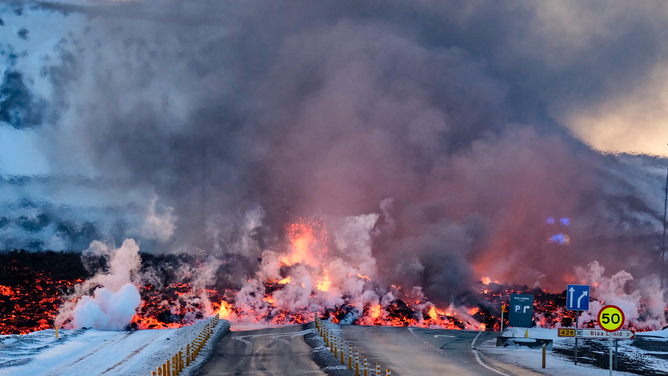
Molten lava is seen overflowing the road leading to the famous tourist destination "Blue Lagoon" near Grindavik, western Iceland on February 8, 2023. A volcanic eruption started on the Reykjanes peninsula in southwestern Iceland on Thursday, the third to hit the area since December, authorities said. (Photo by Kristinn Magnusson / AFP) / Iceland OUT (Photo by KRISTINN MAGNUSSON/AFP via Getty Images)
(Getty Images)
Iceland’s Department of Civil Protection and Emergency Management said a state of emergency was declared Thursday after consulting with emergency officials in the area.
Officials said that the main pipeline that delivers hot water to the region was destroyed after lava flowed over it, causing a lack of hot water.
Residents were urged to conserve as much water and electricity as possible.
Electric ovens can be used to provide heat, but officials said each home can only use one because the area’s electrical grid won’t withstand more use.
CAN ONE VOLCANO'S ERUPTION TRIGGER AN ERUPTION AT ANOTHER VOLCANO?
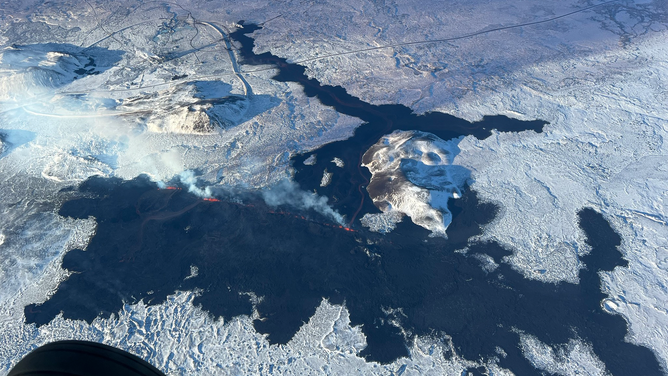
An image showing the new lava flow in Iceland outside Grindavik.
(Iceland’s Department of Civil Protection and Emergency Management/Facebook / FOX Weather)
"If everyone starts the ovens at the same time, the system can fail," officials said in a news release. "It is therefore important that residents follow instructions and only use one electrical stove for heating."
According to national public broadcaster RÚV, Keflavik International Airport, the country’s main international airport, was without hot water.
Airport officials said the eruption itself has so far not impacted any arriving or departing flights, but passengers scheduled to travel into or out of the airport should monitor their airlines in the event they decide to delay or cancel flights.
WHAT ARE THE 4 CLASSIC TYPES OF VOLCANOES?
Iceland’s Blue Lagoon closed, evacuated due to eruption
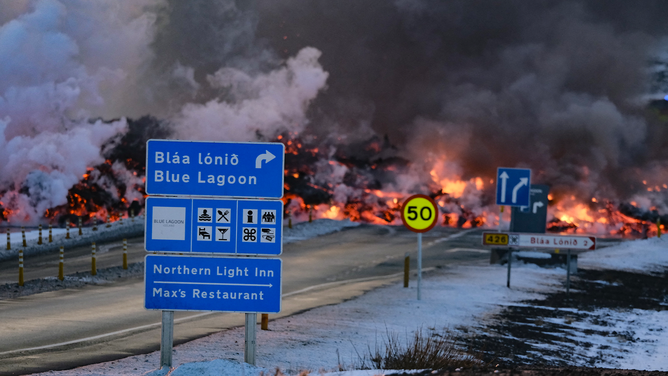
Molten lava is seen overflowing the road leading to the famous tourist destination "Blue Lagoon" near Grindavik, western Iceland on February 8, 2023. A volcanic eruption started on the Reykjanes peninsula in southwestern Iceland on Thursday, the third to hit the area since December, authorities said. (Photo by Kristinn Magnusson / AFP) / Iceland OUT (Photo by KRISTINN MAGNUSSON/AFP via Getty Images)
(Getty Images)
The popular tourist destination Blue Lagoon announced that it had evacuated and shut down operations because of the eruption as a precautionary measure.
In a statement posted to its website, Blue Lagoon said all guests with bookings during the closure would be contacted, and the resort would continue to monitor guidelines and recommendations from emergency officials.
"This commitment aligns with our unwavering dedication to ensuring the safety and wellbeing of our valued guests and staff," the Blue Lagoon said.
